Year-Old Fermented Turnip Pickles: Why are they so good?
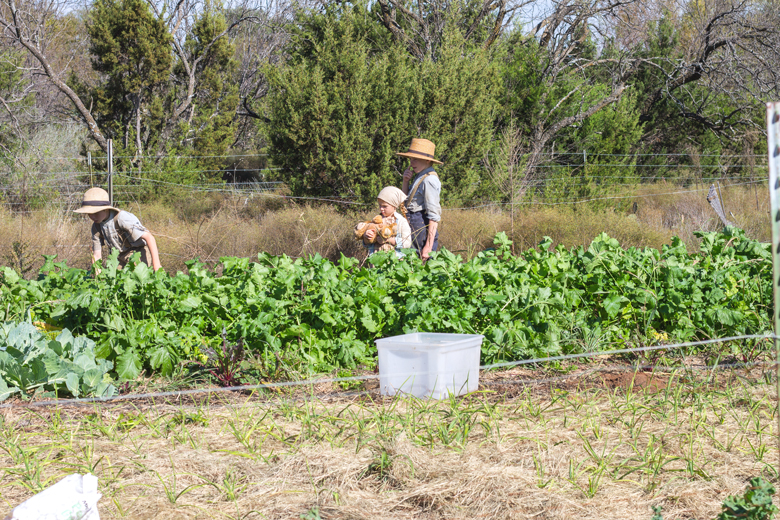
Last year we had a wonderful turnip harvest which nearly overwhelmed me there for awhile. After weeks of eating them fresh almost every single day, the day came when we needed to pull the whole bed. So we brought a couple of totes into the house for processing and sent a tote out to the pasture to feed to the goats.
I canned some and, frankly might regret that decision. They smelled awful when I pulled them out of the canner and I’ve still not opened a jar. We ate a bunch raw and boiled and mashed and stewed. And then, of course, we fermented some. Actually, gallons. We fermented gallons of whole or sliced turnips and gallons of Homestead Chi found in Traditionally Fermented Foods and gallons of Turnip Kraut, too.
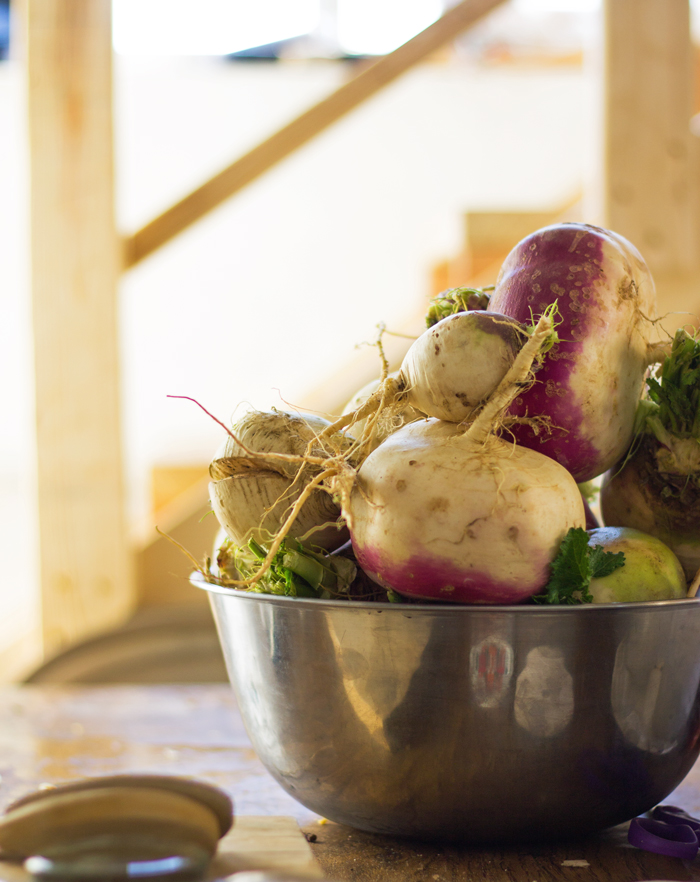
A couple of jars of the whole and sliced turnip pickles were not great and so they went to the goats. The Turnip Kraut and Homestead Chi was eaten up within a few months because we just really like that stuff. And several jars of turnip pickles have sat on our counter for the past year waiting to get eaten up.
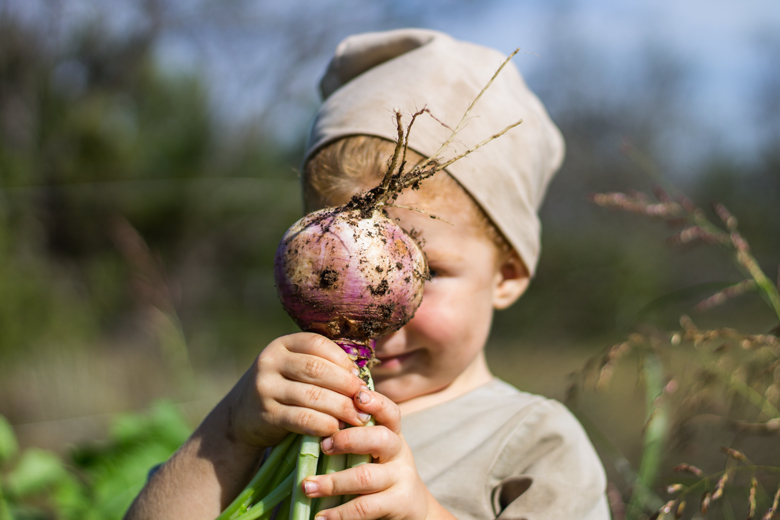
Well, the other day we cracked open our last large gallon jar. There was no yeast in sight. They smelled definitively tangy but not terribly pungent as turnips can often be. I was putting them on the table alongside some fermented okra as the raw portion of our meal but decided I’d better taste one before serving it to the family. I was blown away.
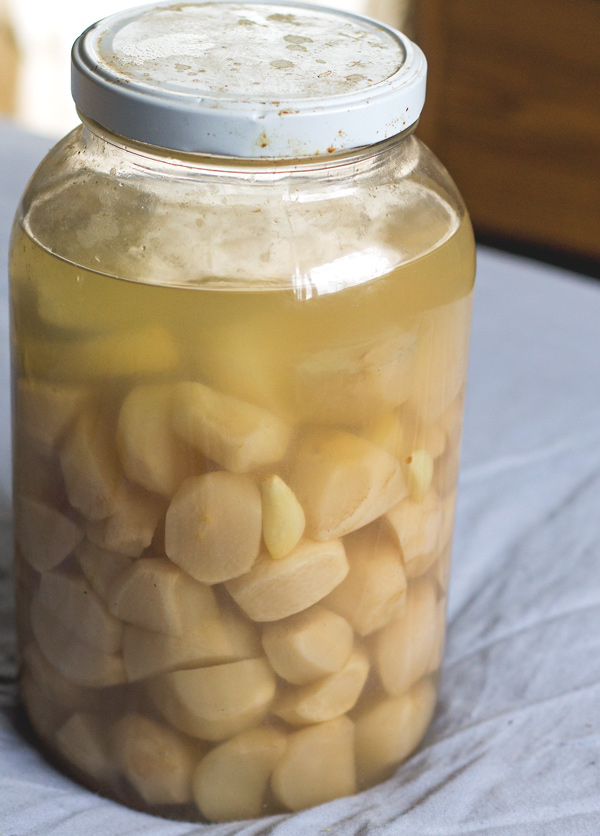
They tasted not unlike a typically sour vinegar-pickled cucumber. In fact, a couple of tasters said “They taste just like store-bought pickles!“. After thinking it over, I believe there are a few reasons these pickles turned out so well and that after an entire year of simply sitting on our kitchen counter:
A cool, slow fermentation. I talk about this a bit more in Traditionally Fermented Foods, but I’ll just say that I find that a low and slow fermentation does wonders for the flavor, texture, and preservation of lacto-fermented pickles of all kinds. These turnips were probably fermented at an average temperature of around 40-60 degrees for a few months.
We peeled the turnips. Like a radish, much of the bite of a turnip is in the skin. I peeled the very large turnips we were harvesting and cooked, raw, and fermented they tasted much better.
The turnips were fermented in a lot of brine. This is something I go into greater detail on in Traditionally Fermented Foods, but suffice it to say, I find that the more brine you have in a jar between the lid and the vegetable, the better the ferment ends up. So I generally fill jars about 80% full and then have about 2-3 inches of brine on top, depending on the size of the vessel. This was a gallon jar and I do think, for some reason, these larger batches keep much better than the pint and quart-sized batches commonly made.
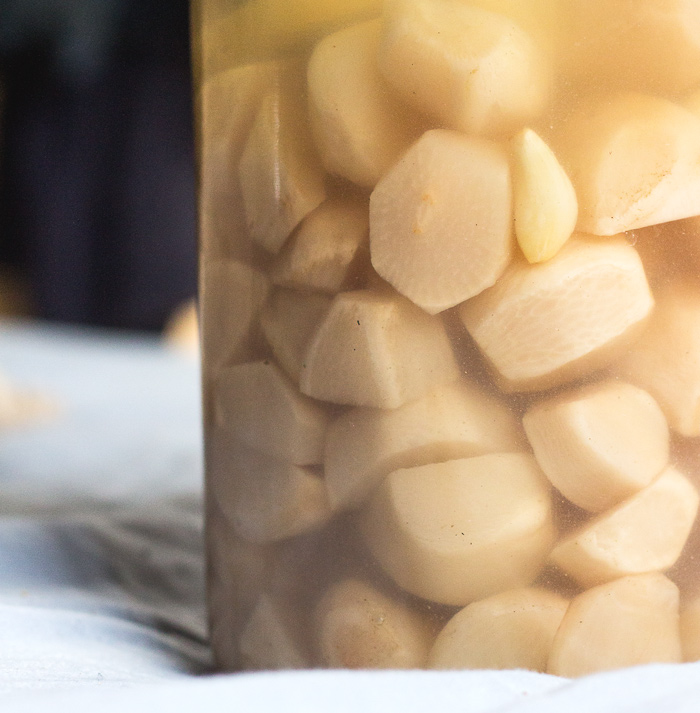
Now that our root cellar is done, I will have more options for keeping ferments cool during those crucial early months of the fermentation process. And now that we know how good these guys can taste, we are finally considering growing large amounts of turnips again – because they just seem to grow no matter what.
What are you growing, harvesting, or fermenting?

I made fermented turnips and turnip pickles this year and we have loved eating them. I think next year, I will plant many more turnips and also beets.
I am new to fermentation i.e. I make sourdough bread and cabbage kraut but would never have though of fermenting turnips – Don’t even know why. I should definitely try to be more adventurous and to ferment more of my vegetables. Thanks for sharing
Turnip pickles remind me of my favorite Japanese fermented vegetable, pickled diakon (even though it’s a type of radish.)